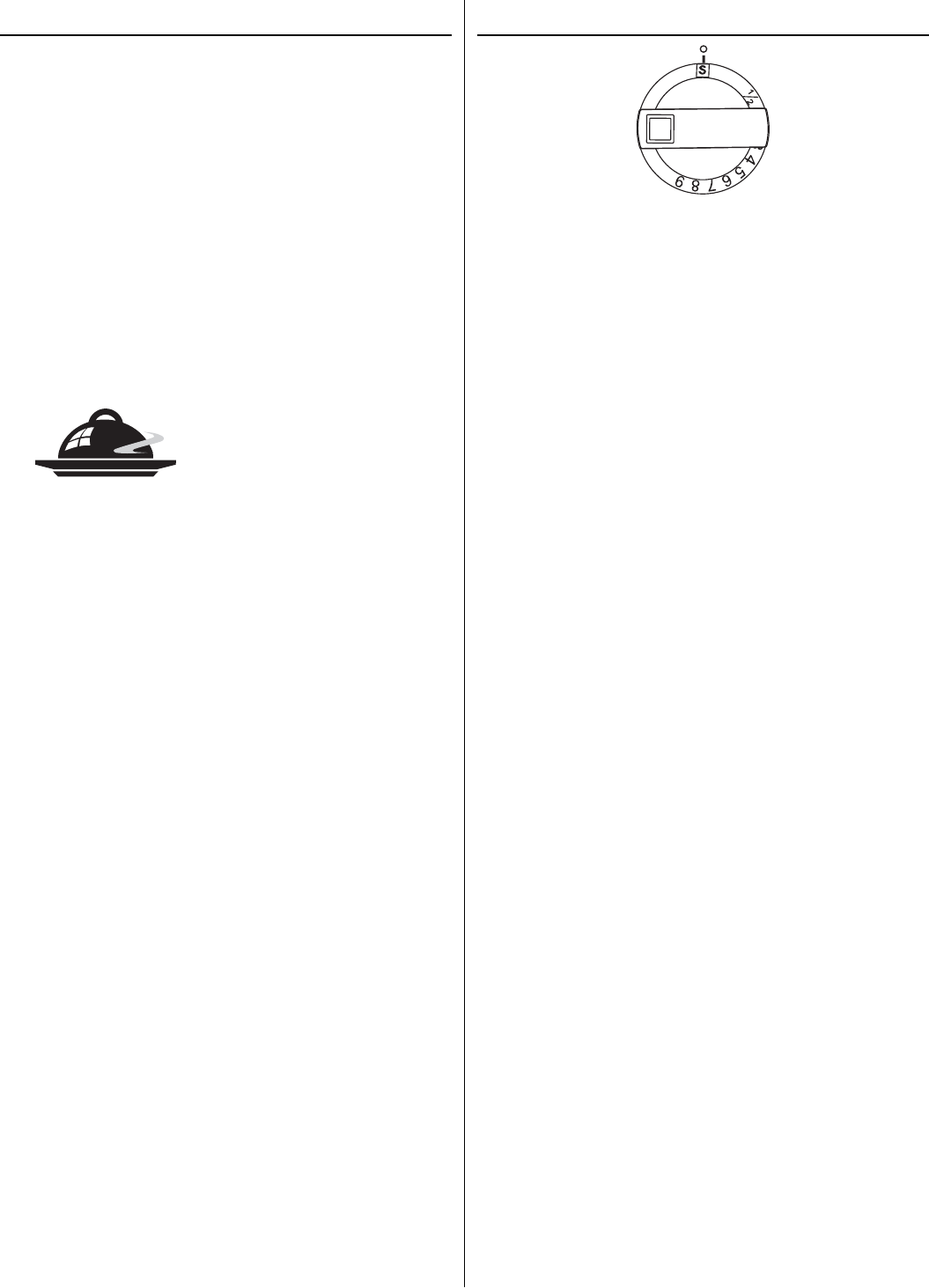
10
Oven cooking
The wire shelves should always be pushed
fi rmly to the back of the oven.
Baking trays with food cooking on them should
be placed level with the front edge of the oven’s
wire shelves. Other containers should be placed
centrally. Keep all trays and containers away
from the back of the oven, as overbrowning of
the food may occur.
For even browning, the maximum recommended
size of a baking tray is 325mm (12
3
/
4
”) by
305mm (12”).
When the oven is on, don’t leave the door open
for longer than necessary, otherwise the knobs
may get very hot.
• Always leave a ‘fi ngers width’ between dishes
on the same shelf. This allows the heat to
circulate freely around them.
• To reduce fat splashing when you add
vegetables to hot fat around a roast, dry them
thoroughly or brush lightly with cooking oil.
• Where dishes may boil and spill over during
cooking, place them on a baking tray.
The oven is protected by a safety cut off, which
reduces the supply of gas to the oven if the
fl ames go out, e.g. an interruption to the mains
supply.
• Plates can be warmed in the oven on the ‘S’
setting. The ‘S’ setting can be used to keep
foods hot for 3-4 hours after ‘normal’ cooking,
without drying out or overbrowning.
• The Cook & Clean oven liners (see Cleaning
your cooker) work better when fat splashes
are avoided. Cover meat when cooking.
• Suffi cient heat rises out of the oven
while cooking to warm plates in the grill
compartment.
• If you want to brown the base of a pastry dish,
preheat the baking tray for 15 minutes before
placing the dish in the centre of the tray.
‘S’ (Slow) cooking
The ‘S’ setting is a very low temperature for
slow cooking, overnight or while you are out
or at work. The ‘S’ setting can also be used for
keeping food warm.
You can cook on ‘S’ throughout, or use a 30
minute ‘boost’ period at gas Mark 6 and then ‘S’
cook.
When roasting joints, poultry or pot
roasting, always cook at Mark 6 for 30
minutes at the beginning of the cooking
period.
You can ‘S’ cook for periods of 6 to 12 hours.
This technique is particularly useful if you want
to cook a dish overnight or while you are out at
work during the day.
Frozen foods must be thoroughly
thawed out before ‘S’ cooking.
Whole poultry should not be cooked on ‘S’.
Chicken casseroles are fi ne.
Casseroles must be brought to boiling
point on the hotplate immediately before
‘S’ cooking.
Poultry and rolled joints should not be stuffed
before cooking. The stuffi ng should be cooked
separately. Poultry and pork should be cooked
in the top half of the oven, and other meats not
lower than shelf position 4.
A roasting joint should be covered with
cooking foil, or with a roasting bag to
reduce shrinkage and retain juices.
Should further browning be necessary, uncover
the meat and increase the temperature to Mark
4 for a short period.
Cut root vegetables into small pieces
unless cooking whole, e.g. jacket
potatoes.
Cover dishes tightly with a lid or foil to prevent
evaporation and transfer of fl avour.


















